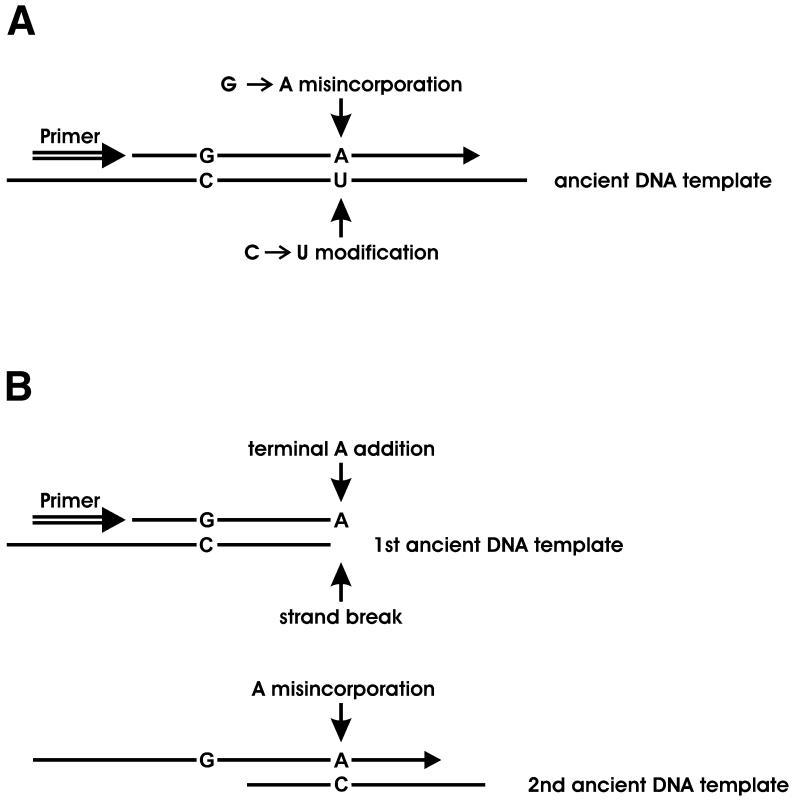Figure 2.
Proposed mechanisms explaining the incorporation of deoxyadenosine residues opposite to deoxycytidine residues in the template molecule. (A) Cytosine deamination. The U in the ancient DNA template represents a deoxyuridine residue, a 5-hydroxydeoxyuridine residue or any other modified deoxycytidine residue read as T by Taq polymerase. (B) Jumping PCR. In the first step, the primer is extended on a template that does not include the second primer site and a terminal deoxyadenosine residue is added at the end of the extension product. In the second step, this product is extended on a second template. If the terminal A primes where the template carries a C, the result is incorporation of a deoxyadenosine residue opposite a deoxycytidine residue.

